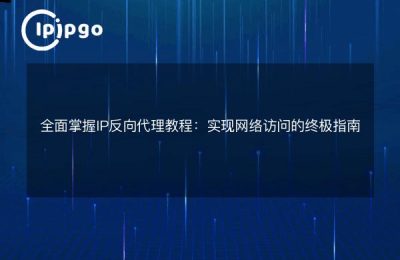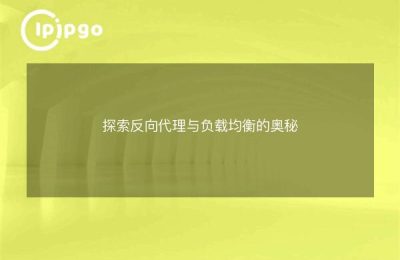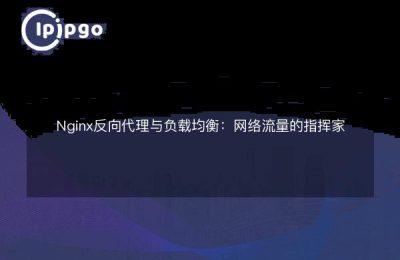
In the modern Internet architecture, Nginx as a high-performance HTTP and reverse proxy server, widely used in all kinds of websites and application services. Today we will talk about the difference between forward proxy and reverse proxy configuration in Nginx. Don't look at these two words are almost the same, but their roles and configurations are very different.
What is a positive proxy?
A forward proxy, as the name suggests, is a proxy for a client to access a server. Let's say you want to go to a certain website, but you don't want the website to know that it's you who went there, so you find an intermediary, and this intermediary helps you to visit the website, and then brings the content back to you. This middleman is the positive proxy.
It's really not that hard to configure a forward proxy in Nginx. First, you need to add a new server block to the Nginx configuration file and then set up the proxy-related directives. Here is a simple example:
server {
listen 8080; server_name proxy.example.com; server_name
server_name proxy.example.com;
location / {
proxy_pass http://$http_host$request_uri; proxy_set_header Host $http_host; location / {
proxy_set_header Host $http_host; proxy_set_header X-Real-IP $remote_addr; proxy_server_name
proxy_set_header X-Real-IP $remote_addr; proxy_set_header
proxy_set_header X-Forwarded-For $proxy_add_x_forwarded_for;
}
}What this configuration means is that when you visit proxy.example.com:8080, Nginx will forward your request to the target server you want to visit and return the target server's response to you. This way, the target server doesn't know your real IP address.
What the hell is a reverse proxy again?
Reverse proxy, sounds a bit roundabout, in fact, is a proxy server to access the client. Or an analogy, you have a Web site, the number of visits is particularly large, the server pressure mountain. So you find an intermediary, this intermediary to help you share the pressure of access, all the requests first to the intermediary there, and then the intermediary to access your server, the results returned to the client. This intermediary is the reverse proxy.
Configuring a reverse proxy in Nginx isn't too complicated. You need to add a new server block to the Nginx configuration file and then set up proxy-related directives. Here is a simple example:
server {
listen 80; server_name ;
server_name www.example.com;
location / {
proxy_pass http://backend_server; proxy_set_header
proxy_set_header Host $host; proxy_set_header X-Real-IP $remote_addr; proxy_set_header
proxy_set_header X-Real-IP $remote_addr; proxy_set_header X-Forwarded-For $proxy_addr
proxy_set_header X-Forwarded-For $proxy_add_x_forwarded_for; proxy_set_header X-Forwarded-For $proxy_add_x_forwarded_for
proxy_set_header X-Forwarded-Proto $scheme;
}
}
What this configuration means is that when you visit www.example.com的时候, Nginx will forward your request to a backend server named backend_server and return the backend server's response to you. This way, your backend server can concentrate on business logic without worrying about being overwhelmed by the number of requests.
Difference between forward and reverse proxy
Although forward and reverse proxies sound similar, their uses and configurations are quite different. To summarize, the main points are as follows:
- Uses vary:Forward proxies are mainly used for clients to hide their identities and access restricted resources; reverse proxies are mainly used for servers to share the load and improve availability and security.
- The configurations are different:Forward proxies usually require configuration of client-side proxy settings, while reverse proxies require server-side configuration.
- The direction is different:Forward proxy is client to proxy server to target server; reverse proxy is client to proxy server to backend server.
Small details in the configuration
When configuring forward and reverse proxies, there are a few minor details to keep in mind. For example, in forward proxying, the URL in the proxy_pass directive is usually dynamic, while in reverse proxying, the URL in the proxy_pass directive is usually static. In addition, additional authentication and permission controls may be required in forward proxies, while issues such as load balancing and caching need to be considered in reverse proxies.
concluding remarks
In summary, although forward proxy and reverse proxy sound similar, they have different uses and configuration methods in practice. Hopefully, through this article, you can have a clear understanding of forward and reverse proxies in Nginx. Whether you are building a forward proxy for anonymous access or a highly available reverse proxy, you can configure them according to your actual needs. Have fun with Nginx and enjoy learning!








